The Mafia in Sicily:
The Mafia (also known as Cosa Nostra) is a Sicilian criminal secret society which first developed in the mid-19th century in Sicily. An offshoot emerged on the East Coast of the United States and in Australia during the late 19th century following waves of Sicilian and Southern Italian emigration. In North America, the Mafia often refers to Italian organized crime in general, rather than just traditional Sicilian organized crime. According to historian Paolo Pezzino: "The Mafia is a kind of organized crime being active not only in several illegal fields, but also tending to exercise sovereignty functions – normally belonging to public authorities – over a specific territory.."
The Sicilian Cosa Nostra is a loose confederation of about one hundred Mafia groups, also called cosche or families, each of which claims sovereignty over a territory, usually a town or village or a neighborhood of a larger city, though without ever fully conquering and legitimizing its monopoly of violence. For many years, the power apparatuses of the single families were the sole ruling bodies within the two associations, and they have remained the real centers of power even after super ordinate bodies were created in the Cosa Nostra beginning in the late 1950s Some observers have seen "mafia" as a set of attributes deeply rooted in popular culture, as a "way of being", as illustrated in the definition by the Sicilian ethnographer, Giuseppe Pitrè, at the end of the 19th century: "Mafia is the consciousness of one's own worth, the exaggerated concept of individual force as the sole arbiter of every conflict, of every clash of interests or ideas."
Many Sicilians did not regard these men as criminals but as role models and protectors, given that the state appeared to offer no protection for the poor and weak. As late as the 1950s, the funeral epitaph of the legendary boss of Villalba, Calogero Vizzini, stated that "his 'mafia' was not criminal, but stood for respect of the law, defense of all rights, greatness of character. It was love." Here, "mafia" means something like pride, honour, or even social responsibility: an attitude, not an organization. Likewise, in 1925, the former Italian Prime Minister Vittorio Emanuele Orlando stated in the Italian senate that he was proud of being mafioso, because that word meant honourable, noble, generous.
Cosa Nostra:
According to some mafiosi, the real name of the Mafia is "Cosa Nostra" ("Our thing"). Many have claimed, as did the Mafia turncoat Tommaso Buscetta, that the word "mafia" was a literary creation. Other Mafia defectors, such as Antonio Calderone and Salvatore Contorno, said the same thing. According to them, the real thing was "cosa nostra". To men of honour belonging to the organization, there is no need to name it. Mafiosi introduce known members to other known members as belonging to "cosa nostra" or la stessa cosa, meaning "he is the same, a mafioso, as you". Only the outside world needs a name to describe it, hence the capitalized form "Cosa Nostra". Cosa Nostra was first used, in the early 1960s, in the United States by Joseph Valachi, a mafioso turned state witness, during the hearings of the McClellan Commission. At the time, it was understood as a proper name, fostered by the FBI and disseminated by the media. The designation gained wide popularity and almost replaced the term Mafia. The FBI even added an article to the term, calling it 'La Cosa Nostra'. In Italy the article 'la' is never used when the term refers to the Mafia.
Rituals of Sicilian Cosa Nostra:
The orientation ritual in most families happens when a man becomes an associate, and then, a soldier. As described by Tommaso Buscetta to judge Giovanni Falcone, the neophyte is brought together with at least three "men of honor" of the family and the oldest member present warns him that "this House" is meant to protect the weak against the abuse of the powerful; he then pricks the finger of the initiate and spills his blood onto a sacred image, usually of a saint. The image is placed in the hand of the initiate and lit on fire. The neophyte must withstand the pain of the burning, passing the image from hand to hand, until the image has been consumed, while swearing to keep faith with the principles of "Cosa Nostra," solemnly swearing "may my flesh burn like this saint if I fail to keep my oath." Joseph Valachi was the first person to mention that in court. The Sicilians also have a law of silence, called omertà; it forbids the common man, woman or child to cooperate at all with the police or the government, upon pain of death.
History of Sicilian Cosa Nostra:
Origins: It has long been debated whether the mafia has medieval origins. Deceased pentito Tommaso Buscetta thought so, whilst modern scholars now believe otherwise. It is possible that the "original" mafia formed as a secret society sworn to protect the Sicilian population from the threat of Catalan marauders in the fifteenth century. However, there is very little historical evidence to suggest this. It is also feasible that the "Robin Hood" origins, which are closely intertwined with the Sicilian outlaw Salvatore Giuliano, were perpetuated by the earliest known mafiosi as a means of gaining goodwill and trust from the Sicilian people. This origin states that the Mafia is a means for righteous rebels to defend the people against oppression, Roman and Northern Italian control, and outside invasion.
After the Revolution of 1848 and the revolution of 1860, Sicily had fallen to complete disorder. The earliest mafiosi, at that time separate, small bands of outlaws, offered their guns in the revolt. Author John Dickie claims that the main reasons for this were the chance to burn police records and evidence, and to kill off police and pentiti in the chaos. However, once a new government was established in Rome and it became clear that the mafia would be unable to execute these actions, they began refining their methods and techniques over the latter half of the nineteenth century. Protecting the large lemon groves and estates of local nobility became a lucrative but dangerous business. Palermo was initially the main area of these activities, but the Sicilian mafia's dominance soon spread over all of western Sicily. In order to strengthen the bond between the disparate gangs and so ensure greater profits and a safer working environment, it is possible that the mafia as such was formed at this time in about the mid-19th century.
Mafia after the unification of Italy:
From 1860, the year when the new unified Italian state first took over both Sicily and the Papal States, the Popes were hostile to the state. From 1870, the Pope declared himself besieged by the Italian state and strongly encouraged Catholics to refuse to cooperate with the state. Broadly speaking, in mainland Italy, this did not lead to violence. Sicily was strongly Catholic, but in a strongly tribal sense rather than in an intellectual and theological sense, and had a tradition of suspicion of outsiders. The friction between the Church and the state gave a great advantage to violent criminal bands in Sicily who could claim to peasants and townspeople that cooperating with the police (representing the new Italian state) was an anti-Catholic activity. It was in the two decades following the 1860 unification that the term Mafia came to the attention of the general public, although it was considered to be more of an attitude and value system than an organization.
The first mention in official law documentation of the 'mafia' came in the late 1800s, when a Dr. Galati was subject to threats of violence from a local mafioso, who was attempting to oust Galati from his own lemon grove in order to move himself in. Protection rackets, cattle rustling and bribery of state officials were the main sources of income and protection for the early mafia. Cosa Nostra also borrowed heavily from masonic oaths and rituals, such as the now famous initiation ceremony.
Fascist era:
During the Fascist period in Italy, Cesare Mori, prefect of Palermo, used special powers granted to him to prosecute the Mafia, forcing many Mafiosi to flee abroad or risk being jailed. Many of the Mafiosi who escaped fled to the United States, among them Joseph Bonanno, nicknamed Joe Bananas, who came to dominate the U.S. branch of the Mafia. However, when Mori started to persecute the Mafiosi involved in the Fascist hierarchy, he was removed, and the Fascist authorities proclaimed that the Mafia had been defeated. Though the mafia was weakened, it had not been defeated as claimed. Despite his assault on their brethren, Mussolini had his admirers in the New York Mafia, notably Vito Genovese (although he was from Naples and not from Sicily).
The post-war revival:
After Fascism, the Mafia did not become powerful in Italy again until after the country's surrender in World War II and the U.S. occupation. The United States used Italian connections of American Mafiosi during the invasion of Italy and Sicily in 1943. Lucky Luciano and other Mafiosi, who had been imprisoned during this time in the U.S., provided information for U.S. military intelligence and used Luciano's influence to ease the way for advancing troops. Furthermore, Luciano's control of the ports prevented sabotage by agents of the Axis powers.
Some say that the U.S. Office of Strategic Services, precursor to the CIA, deliberately allowed the mafia to recover its social and economic position as the "anti-State" in Sicily, and with the U.S.-mafia alliance forged in 1943, this became the true turning point of mafia history and the new foundation for its subsequent 60-year career. Others, such as the Palermitan historian Francesco Renda, have argued that there was no such alliance. Rather, the mafia exploited the chaos of post-fascist Sicily to re conquer its social base. The OSS indeed, in its 1944 "Report on the Problem of Mafia" by the agent W. E. Scotten, pointed to the signs of mafia resurgence and warned of its perils for social order and economic progress.
An alleged additional benefit (from the American perspective) was that many of the Sicilian-Italian Mafiosi were hard-line anti-communists. They were therefore seen as valuable allies by the anti-communist Americans, who allegedly used them to root out socialist and communist elements in the American shipping industry as well as wartime resistance movements and postwar local and regional governments in areas where the Mafia held sway.
According to drug trade expert Dr. Alfred W. McCoy, Luciano was permitted to run his crime network from his jail cell in exchange for his assistance. After the war, Luciano was rewarded by being released from prison and deported to Italy, where he was able to continue his criminal career unhindered. He went to Sicily in 1946 to continue his activities and according to McCoy's landmark 1972 book The Politics of Heroin in South-East Asia, Luciano went on to forge a crucial alliance with the Corsican Mafia, leading to the development of a vast international heroin trafficking network, initially supplied from Turkey and based in Marseille — the so-called "French Connection".
Later, when Turkey began to eliminate its opium production, he used his connections with the Corsicans to open a dialogue with expatriate Corsican mafiosi in South Vietnam. In collaboration with leading American mob bosses including Santo Trafficante Jr., Luciano and his successors took advantage of the chaotic conditions in Southeast Asia arising from the Vietnam War to establish an unassailable supply and distribution base in the "Golden Triangle", which was soon funneling huge amounts of Asian heroin into the United States, Australia and other countries.
The modern Mafia in Sicily:
The main split in the Sicilian Mafia at present is between those bosses who have been convicted and are now imprisoned, chiefly Riina and "capo di tutti capi" Bernardo Provenzano, and those who are on the run, or who have not been indicted. The incarcerated bosses are currently subjected to harsh controls on their contact with the outside world, limiting their ability to run their operations from behind bars under the article 41 bis prison regime. Antonino Giuffrè – a close confidant of Provenzano, turned pentito shortly after his capture in 2002 – alleges that in 1993, Cosa Nostra had direct contact with representatives of Silvio Berlusconi who was then planning the birth of Forza Italia.
The deal that he says was alleged to have been made was a repeal of 41 bis, among other anti-Mafia laws in return for electoral deliverances in Sicily. Giuffrè's declarations have not been confirmed. The Italian Parliament, with the support of Forza Italia, extended the enforcement of 41 bis, which was to expire in 2002 but has been prolonged for another four years and extended to other crimes such as terrorism. However, according to one of Italy’s leading magazines, L'Espresso, 119 mafiosi – one-fifth of those incarcerated under the 41 bis regime – have been released on an individual basis. The human rights group Amnesty International has expressed concern that the 41-bis regime could in some circumstances amount to "cruel, inhumane or degrading treatment" for prisoners.
In addition to Salvatore Lima, mentioned above, the politician Giulio Andreotti and the High Court judge Corrado Carnevale have long been suspected of having ties to the Mafia.
By the late 1990s, the weakened Cosa Nostra had to yield most of the illegal drug trade to the 'Ndrangheta crime organization from Calabria. In 2006, the latter was estimated to control 80% of the cocaine import to Europe. The mafia also have a strong business in extortion big companies as well as smaller ones. It estimates that 7% of Italy's output is filtered off by organized crime. The Mafia has turned into one of Italy's biggest business enterprises with a turnover of more than US$120 billion a year. |
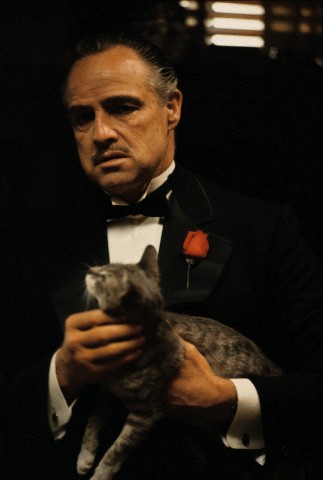
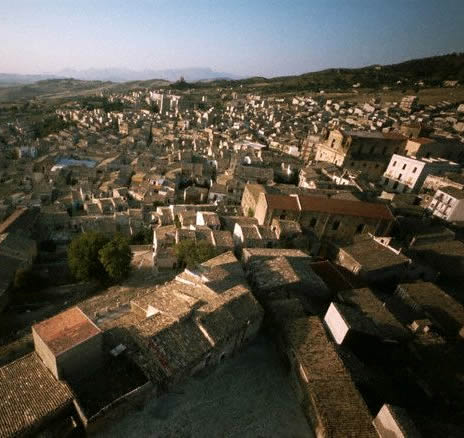
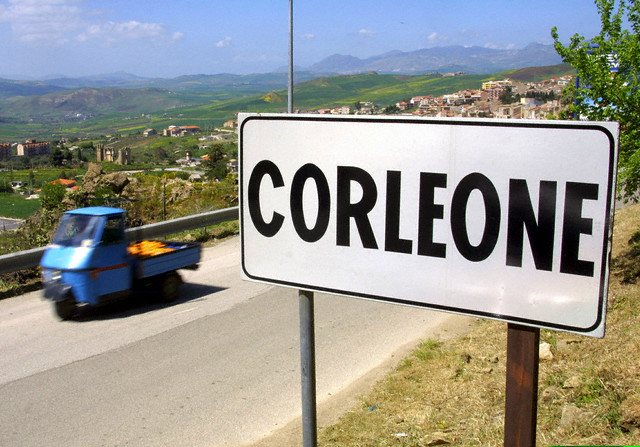
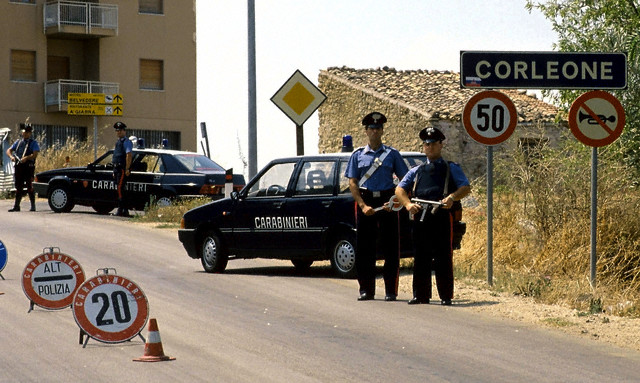
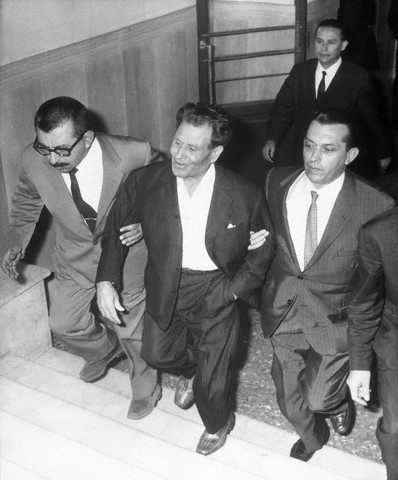
|






